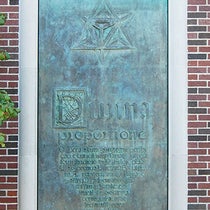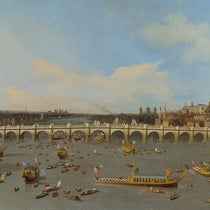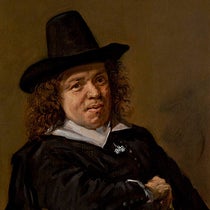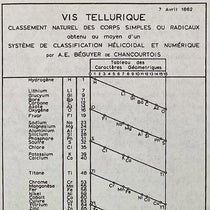Scientist of the Day - Tycho Brahe
Tycho Brahe, a Danish astronomer, was born Dec. 14, 1546. Five years ago, on this day, we ran a post on Tycho that you can still read; it was rather general in nature, and served mainly to introduce the variety of Tycho-related works that we have in our collections, with 6 attractive images from those works. Today I thought we would talk about two aspects of Tycho's career that we did not discuss in our earlier post: his attempt to make a new catalog of the stars, and his relationship with Johannes Kepler.
When Copernicus included a catalog of the stars in his milestone book, De revolutionibus orbius coelestium (1543), it was a catalog that was about 1300 years old, having been compiled by Ptolemy of Alexander in the 2nd century A.D. and included in his Almagest. All star catalogs and star atlases until almost 1600 were based on Ptolemy's catalog. There had been several attempts to compile a new catalog, most notably by Islamic astronomers such as Ulugh Begh, but these were not known in the west.
Tycho's main concern in his observing program at Hven, his island not too far from Copenhagen, was to record the positions of the planets, since he believed that only a long and continuous record of planetary positions would allow one to determine accurate planetary models. But he also set his sights on the stars, and by the 1590s, he had recorded new positions for over 1000 of them, about as much as one could do without telescopic sights. One of his assistants at Hven was a Dutch cartographer, Willem Janszoon Blaeu, whom we discussed here just two months ago. Blaeu was allowed by Tycho to use his star catalog as the basis for a celestial globe, which Blaeu published in 1599. No copy of that globe survives (although there is a set of gores for the globe at Harvard - see our post on Blaeu), but it was republished in 1603, adding the new southern stars, but with the traditional stars unchanged and still based on Tycho's stellar catalog. We see here, on the left, one of the few surviving 1603 Blaeu celestial globes, in the Museum of the History of Science at Oxford (third image).
The other early appearance of Tycho's star catalog came in the Uranometria of Johann Bayer (1603). This was a magnificent atlas – the first modern star atlas – and all of the traditional stars were positioned according to Tycho's observations. We show here a plate from that atlas, of the constellation Cassiopeia (fourth image), since it also happens to depict the nova of 1572 that Tycho studied carefully and used to argue that the heavens were not immutable after all. That nova – now known to be a supernova – is still known as Tycho's star.
In 1597, Tycho had a falling out with the new Danish king and left Hven, travelling about northern Europe with his entourage like a princely nomad until finally winding up in Prague, invited there by Emperor Rudolph II. It was in Prague that Tycho encountered young Johannes Kepler, then a teacher in Graz. Kepler worked as one of Tycho's assistants, off and on beginning in 1600, assigned to the problem of Mars, a planet that did not behave as the models predicted it should. A new model was needed, and that was Kepler's project. Kepler didn't much care for his subordinate role in Prague, but that became irrelevant on Oct. 24, 1601, when Tycho died from uremia caused by a bladder problem. Kepler is our main witness to Tycho's illness, which began on Oct. 13, when he left an imperial banquet and found himself unable to urinate, his painful death coming 11 days later. Kepler records that Tycho, as a kind of death-bed request, asked him to publish the results of his years of planetary observations in tabular form, and to defend his cosmological system, and Kepler says he agreed to do that. The promise was fulfilled almost 30 years later, when Kepler published his Rudolphine Tables (1627), with the Tycho-based tables inside, and a frontispiece that may or may not have touted the Tychonic cosmology (see our post about the frontispiece). Much earlier, Kepler has used his "war on Mars'," undertaken at Tycho's request, to discover that Mars, and all other planets, move in elliptical orbits.
Conspiracy theorists had long speculated about Tycho's death, wondering if he might have been poisoned, and even Kepler was included in the list of possible villains. In 2010, Tycho was disinterred form his resting place in the Church of Our Lady of Týn in Prague, so that samples of his hair could be taken, but mercury levels were normal, and no traces of poison were detected. The chemical sleuths also took samples from the nose area of Tycho’s skull. Tycho had lost part of his nose in a duel in his youth, and he wore a metallic replacement, fixed in place with wax, for the rest of his life. It was often described as a silver or gold nose, but analysis found only traces of copper and zinc, indicating the prosthetic nose was brass, at least the one he was buried with. If he had a silver or gold nose for formal occasions, it did not make the trip to the grave.
Dr. William B. Ashworth, Jr., Consultant for the History of Science, Linda Hall Library and Associate Professor emeritus, Department of History, University of Missouri-Kansas City. Comments or corrections are welcome; please direct to ashworthw@umkc.edu.



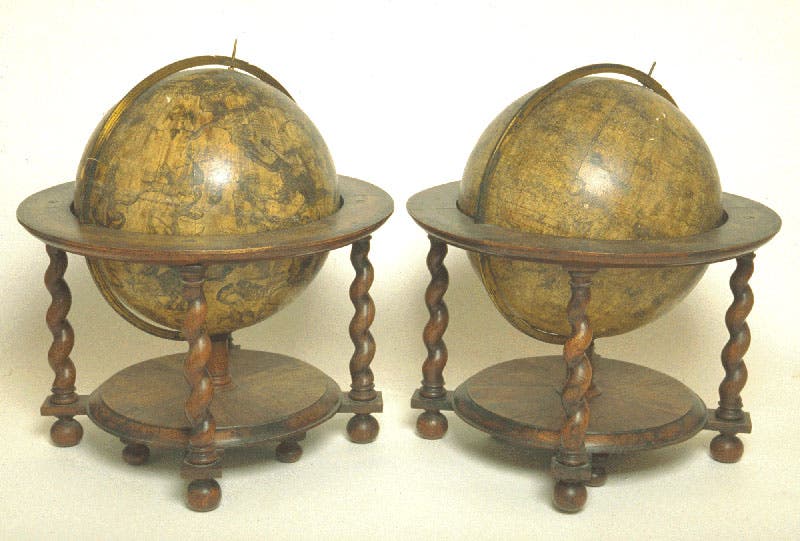

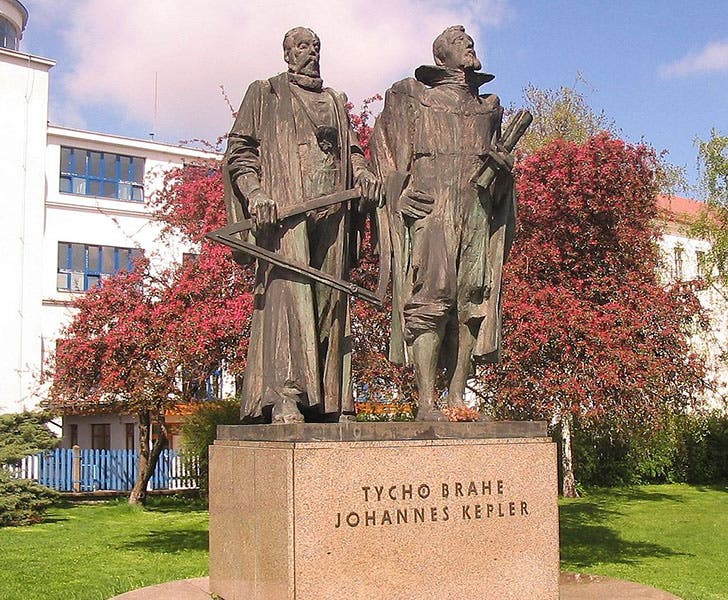
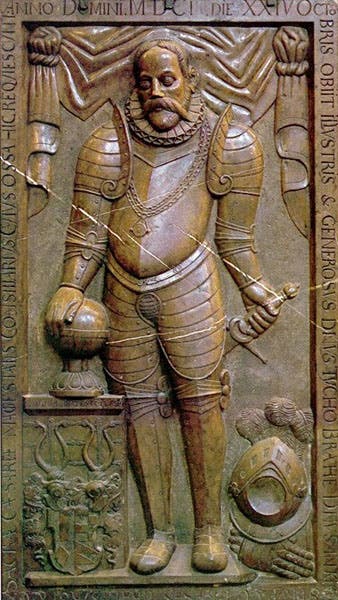
![Agama colonorum (Spiny agama), hand-colored lithograph, cropped, Neue Wirbelthiere zu der Fauna von Abyssinien, by Eduard Rüppell, [v. 3] Amphibien, plate 4, 1835 (Linda Hall Library)](https://assets-us-01.kc-usercontent.com:443/9dd25524-761a-000d-d79f-86a5086d4774/42f3e8a2-b691-4d33-abd7-55d0d07fc1be/Ruppel%201.jpg?w=210&h=210&auto=format&fit=crop)
